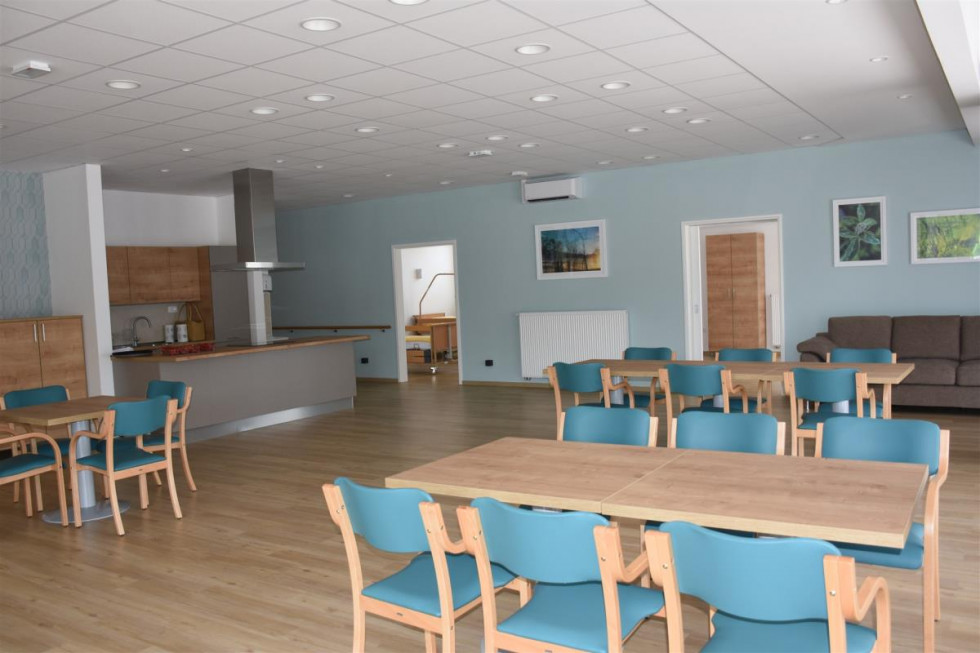The development of rural areas requires coherent and integrated rural development approaches. Combining different European funds offers opportunities to invest in infrastructure, technology and people for resilient, inclusive and prosperous rural areas.
Recent high-level events organised in the framework of the Slovenian Presidency of the Council of the EU looked at topics close to the ambitions and goals of the Long-term vision for rural areas for 2040.
The international conference ‘Women and their position in rural areas’[1] (20 August 2021) was attended by 11 delegations from EU member states, Western Balkan partners and FAO. Representatives of the delegations adopted a declaration[2] emphasising that strengthening the role of women in rural areas requires a comprehensive approach, which calls for a cooperation between different policies such as infrastructure, economy, social affairs, healthcare, education, as well as tax, land and demographic policy and others. They welcomed future cooperation and further efforts to find solutions for the integrated development of the European countryside.
Strengthening the dialogue between the urban and rural areas[3] was the topic of the informal meeting of EU agriculture ministers (5-7 September 2021). Key challenges are the integration of agriculture and non-agricultural activities in new rural settlements and society’s expectations towards rural areas, which are expected to provide their inhabitants with living standards similar to those in cities, to contribute to natural ecosystem services and other public goods. The ministers discussed how member states see the coexistence of urban and rural areas, how to solve challenges and prevent conflicts, and what role the CAP can play in this. They agreed that rural areas are a multi-purpose space in which various activities coexist and complement each other, but sometimes also compete. The social role of rural areas needs to be redefined and at the same time supported in all its diversity and quality.
The international conference Smart Villages for a Green, Digital and Resilient Europe[4] (1 October 2021) focused on how to make rural areas attractive and vibrant in order to reduce the development gap between urban and rural areas. High-level speakers included European Commissioner Dubravka Šuica and FAO director-general Qu Dongyu, four Slovenian ministers responsible for agriculture, regional development, social affairs and digital transformation, business representatives from different fields (energy, connectivity, e-health) and local stakeholders such as LEADER Local Action Groups. The high level of the participants confirmed the importance of rural areas in Slovenia and policy-makers’ awareness of the countryside’s needs. The conference also established the European Forum for Smart Villages[5], which will bring together politicians at all levels and businesses with the aim of developing concrete activities contributing to rural development.
Good practice examples of digitalisation in various economic and social sectors showed how the business sector is already developing future-orientated solutions for the countryside and small cities: for example, Toyota Adria is developing innovative mobility services for rural areas, Huawei on connectivity, Telekom Slovenia on e-health. An outstanding example from the social sector, the Smart Silver Villages, is presented in detail below.
One of the messages from all these events is that the use of different EU funds can make the long-term vision a reality. The new CAP is one of the key sources of EU funding for rural areas, and the European Regional Development Fund, the Cohesion Fund and the European Social Fund Plus can provide significant investments in people and infrastructure in rural areas. The Recovery and Resilience fund and European Investment Bank support can be used to cover existing investments gaps.
Smart Silver Villages: a case study
The Smart Silver Village concept is bringing together different EU funds to address the growing need for long-term elderly care in the countryside – close to people’s homes. The Slovenian countryside has an aging population and villages face an increasing lack of services, which diminishes the quality of life. The LAG Posavje joined forces with other Slovenian LAGs to design smart solutions that would keep the countryside vital, developed and populated.
The Smart Silver Village concept was developed in the frame of the LEADER cooperation project ‘Smart Villages for Tomorrow’[1].
As part of the project, a study examined different smart living systems for older people with long-term care needs. Based on the study’s results, various concepts of housing units could be developed across Slovenia and beyond. Smart housing systems include health and social services upgraded with digital, telecommunication’s technologies and green innovations (e.g. locally-produced energy and food, free transport).
The concept of Smart Silver Village include also day centres for elderly people whose relatives are absent during the day due to their jobs. A first day centre was already built in Videm[2], co-financed by the European Fund for Regional Development and the Krško Municipality. New, qualified local jobs were created for young people.
Project Smart Village also encouraged the implementation of another pilot project, MOST, which offers integrated health and social care for elderly people at home. This project was funded by European Social Fund. In the future the Krško municipality is planning to build other ‘silver villages’ with support from a combination of EU funds.
